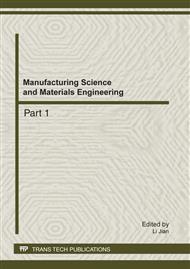p.418
p.424
p.430
p.437
p.442
p.447
p.452
p.459
p.464
Application of Adaptive Weighted Fusion in Robot Multi-Sensor Ranging System
Abstract:
Ultrasonic seniors and infrared sensors are utilized in the robot to range and locate. The precision of the whole system is often impaired. In order to improve the system’s precision, the method of adaptive weighted fusion algorithm basing on minimum mean square error is employed in this paper. According to the experimental results, this method is highly effective in the further improvement of the system ranging precision.
Info:
Periodical:
Pages:
442-446
Citation:
Online since:
January 2012
Authors:
Keywords:
Price:
Сopyright:
© 2012 Trans Tech Publications Ltd. All Rights Reserved
Share:
Citation:


